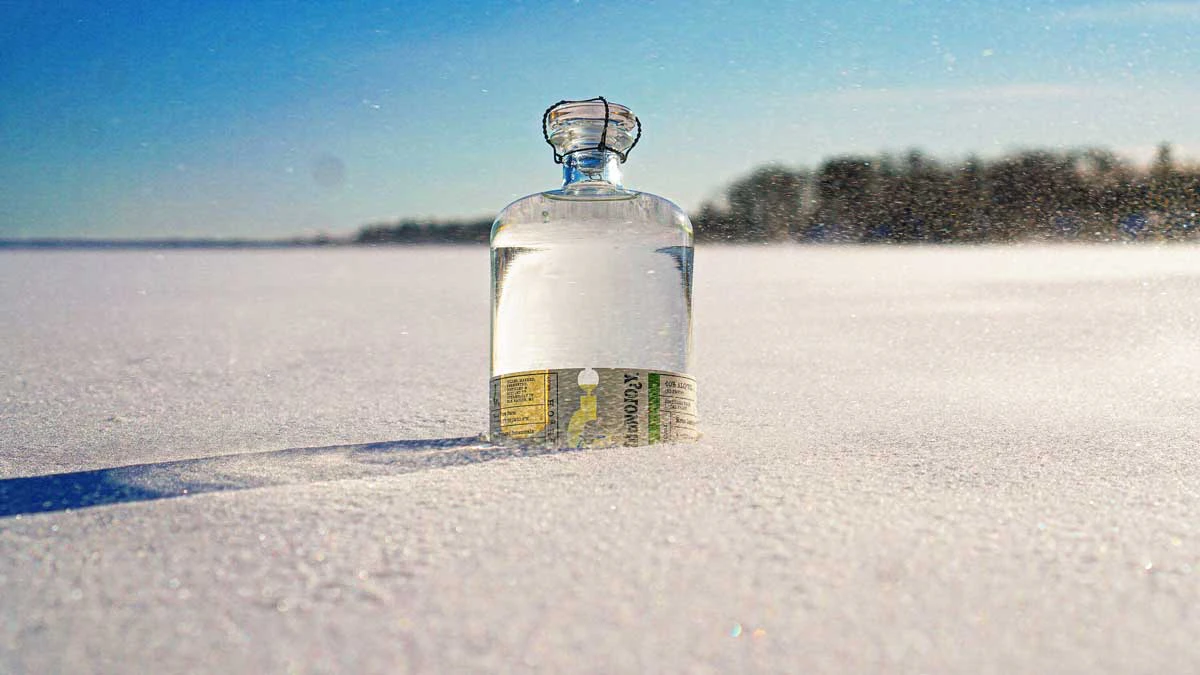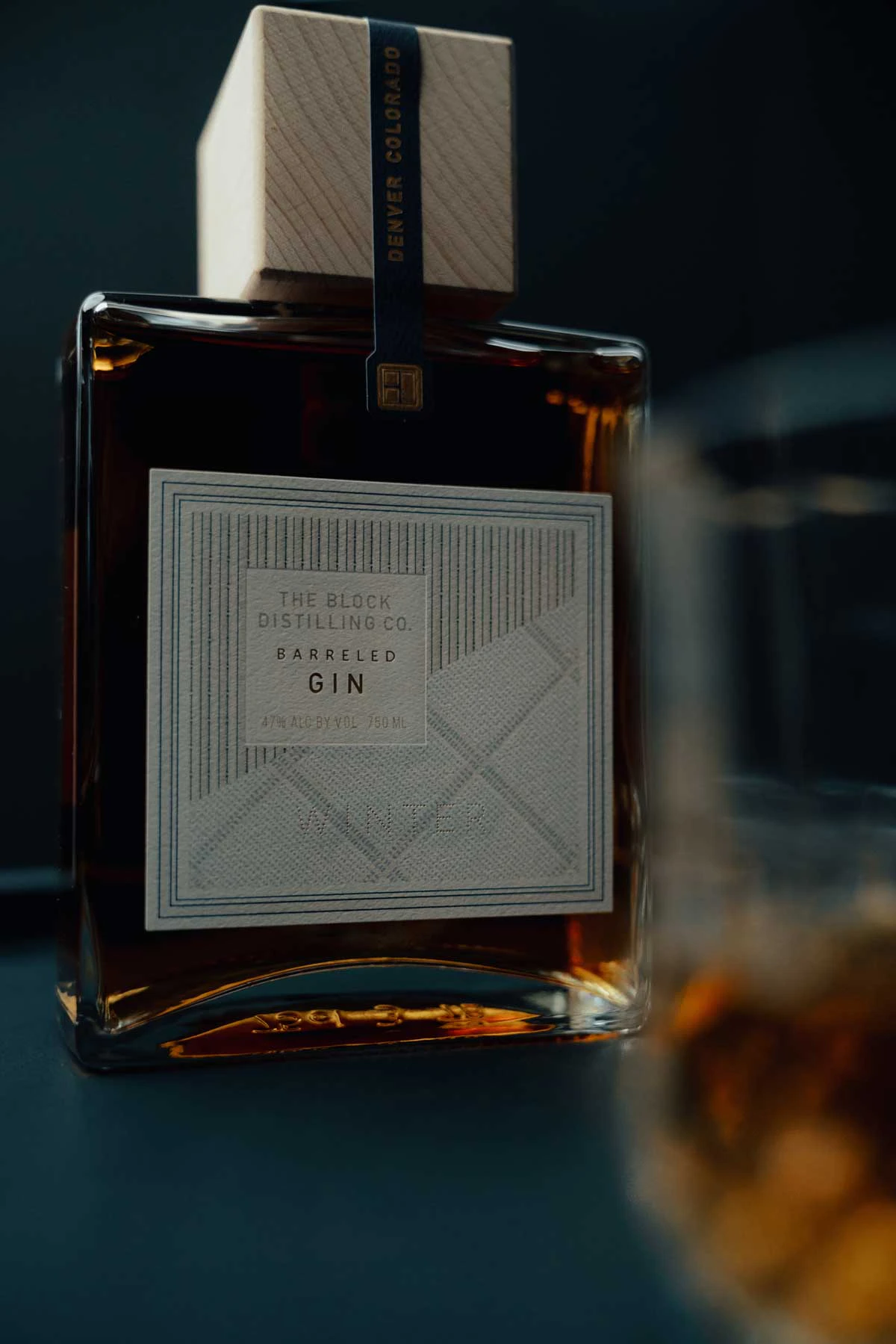The traditional gin profile is one that often evokes thoughts of sun, bright citrus, and a refreshing gin and tonic, so it’s no surprise that distillers can slot such spirits into a summer theme.
On the other hand, positioning gin as an autumnal or wintery choice might seem like more of a conceptual challenge. However, with seasonally themed releases, some craft distilleries are doing just that.
By fully embracing the wider flavor spectrum of botanicals, these distillers can release gins that celebrate each of the four seasons, attracting sales that might otherwise go to brown spirits or other beverages as the days get cooler, the nights get longer, and the holidays approach.
Embracing the Wider Seasonal Spectrum
Michigan’s Ann Arbor Distilling is one gin maker that’s broadening its flavors in an effort broaden its customer base. Managing director Robert Cleveland says the idea came about as a way to appeal to a more diverse range of palates.
“I got so many people who said, ‘Look, I’m not a gin drinker,’ … and it started to dawn on me that they weren’t juniper drinkers,” Cleveland says. By creating a wider range of gins—including some gins that aren’t as juniper-heavy—the Ann Arbor team hopes to convert gin sceptics into fans.
Cleveland says he recognized that many consumers consider gin to be a summery drink, something that became more apparent as Ann Arbor’s whiskeys picked up sales in the fall. The Arbor Fall Gin is a barrel-reserve gin distilled in the Old Tom style; it rests in bourbon barrels, and its botanicals include clove, oak moss, pumpkin, and squash. Meanwhile, the Arbor Winter Gin is juniper-forward, also featuring spruce, peppermint, vanilla, orange, and cacao in the botanical blend.
Being a small distillery makes that kind of experimentation easier, Cleveland says. “Michigan is the second-most diverse fruit and vegetable state in the union, so we take full advantage of it.” The distillery can source many of its ingredients from local farms. While some drinkers might stick with their favorite seasonal variety year-round, the distillery does see a “quantifiable change,” he says, in sales of the expression designed to match the time of year.
Seasonal and Local
In Glasgow, Scotland, Crossbill Distilling also focuses on locally sourced botanicals for its seasonal small-batch gins, using hand-gathered ingredients. “As we only pick the botanicals during their peak season, our gins are truly unique and limited,” says Barbora Tichakova, marketing manager. “Once they’re gone, they’re gone.”
It’s an endeavor that reconnects the distillery to its roots and to its overall intent to explore Scotland’s local resources for a gin that’s 100 percent Scottish. “Most gin makers import dried juniper from places like Macedonia or Italy, but we wanted to revive the tradition of using Scottish juniper,” Tichakova says. Juniper was a major export from Scotland in the 17th century, but British wild juniper has been in decline more recently.
Besides the Scottish juniper, Crossbill makes its winter gin with sea buckthorn—which thrives in Scotland’s coastal areas at the beginning of winter—and dulse seaweed, which adds a briny note.
“The sea buckthorn is hand-picked in East Lothian by Seabuckthorn Scotland, a social enterprise dedicated to maximizing the potential of this unique plant,” Tichakova says. “The dulse seaweed is gathered from beaches in the East Neuk of Fife by Mara Seaweed, Scotland’s award-winning seaweed producer, known for their pioneering work in sustainable harvesting.”
With these seasonal gins, Tichakova says, the distillery wants to show that Scotland offers an abundance of incredible flavors, “even in the coldest and most barren months.”
Wood for Winter
Philadelphia Distilling bills its Bluecoat Barrel-Finished Gin as “the gin for whiskey drinkers,” and director of operations Aaron Selya says they see a seasonal uptick in sales at a time when many drinkers favor brown spirits.
They rest their Bluecoat American Dry Gin on new charred oak barrels for six to 12 months, while their second-use barrels will get gin for 10 to 24 months. “The final product is a mixture of that first-use and second-use barrel-finished gin,” Selya says.
With the flavors picked up from the oak, the Barrel-Finished Gin is also a natural fit for seasonal cocktails, he says. “As our bar team develops cooler-weather cocktails, they include our barrel-finished gin in more of them, as it complements typical fall and winter flavor elements, like baking spices and caramelized sugar.”
Selya says that also creates opportunities to bring more drinkers into the gin fold, as whiskey drinkers often enjoy the barrel-finished gin in old fashioned or similar cocktails.

Ethanology Hiems Winter Gin. Photo courtesy Ethanology Distillation
Winter Wheat, Winter Fruits
Back in Michigan, Ethanology is another distillery making gin that showcases cool-climate ingredients.
Founded by husband-and-wife team Nicholas and Geri Lefebre, Ethanology is in Elk Rapids, in the northwestern part of the state, where temperatures fall well below freezing for several months of the year. Ethanology distills the base for its Hiems Winter Gin from soft red winter wheat, grown by fourth-generation farmers just 33 miles from the distillery. The distillery operates a custom 500-liter batch distillation system.
Nicholas Lefebre says that water from a glacially formed aquifer and fermentation via wine yeast contribute to what makes the Winter Gin special, referring to it as a “full-bodied base.”
Lefebre says that he wanted a “fruit-of-the-forest pie feel” for the gin, but the first fruit he used in the distillation was cranberry, which came with obstacles. “After six months of development, we were getting these beautiful distillates coming off the still as new make. And then, 72 hours later, completely neutral distillate,” he says.
Diving deep into the chemistry, the team figured out the issues and replaced the cranberry with fig. Other botanicals in the blend include frankincense, allspice, locally sourced burdock, and mint that’s wild-foraged in northern Michigan.
Lefebre says he feels it’s a good gin for sipping. “I enjoy it on the rocks with lemon peel,” he says. He says it’s also ideal in a dirty martini, where the salinity juxtaposes with the fruit. There’s also a barrel-finished version that ages in barrels made from oak seasoned for 24 months. The oak-finished gin has a note of orange crème brûlée, Lefebre says; he recommends using it in a maple-syrup old fashioned.

Photo courtesy The Block Distilling
Spice Is Nice, Too
Denver’s The Block Distilling also leans on traditional winter spices to make a gin suitable for the cooler months.
Cofounder and distiller Kraig Weaver says he thinks that “our palates just change because we’re affected more than we realize by what the weather’s doing.”
He says having different gins in the distillery’s range allows them to tap into a greater wealth of botanical options. “When we started trying to think about gin recipes, we thought it would be crazy of us to try to only come up with [one] recipe,” he says. By creating different expressions, the team can play with different flavor profiles.
The Block produces the base spirit in-house using three grains: oats, wheat, and barley. The distillery barrel-ages its Winter Gin, whose botanical mix includes clove, cardamom, allspice, peppercorn, nutmeg, and vanilla. They then rest it for six months in new No. 3 char American white oak barrels, which add notes of caramel and brown sugar to round out the spices.
“We use a decent amount of black cardamom, which definitely gives a lot of smoky earthiness,” Weaver says.
While he loves to drink London dry gin, he says that he wasn’t trying to release one. Instead, The Block’s gin range is fairly light on juniper. “We love to honor tradition … but we also want to push the boundaries of where categories lie.”
